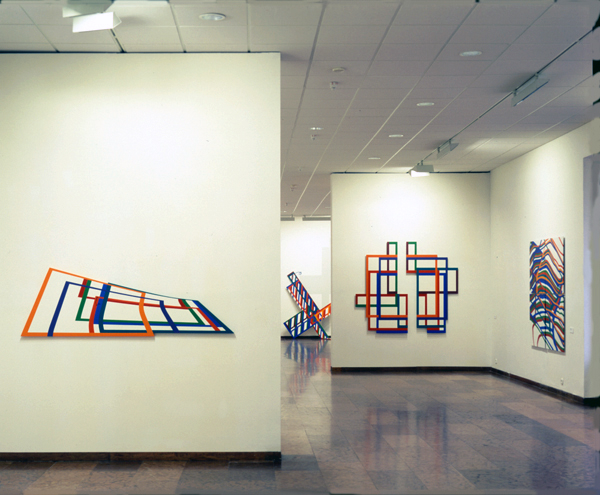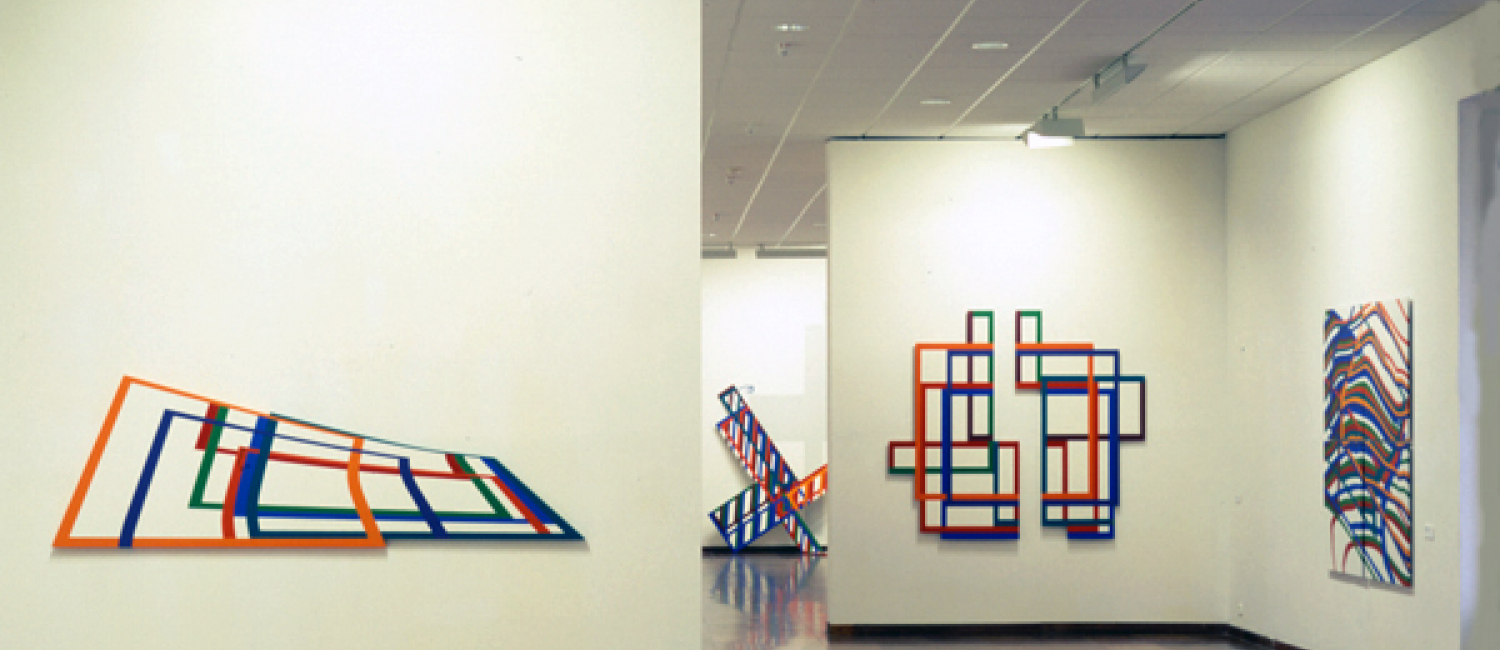One ego of Dóra Maurer is playful, witty and womanlike, while her other ego is decisive, exact and well-organized. It is largely owing to her activities that exhibitions of concrete, systematic and serial art were presented in Hungary from the 70s. But Maurer’s serial works rarely miss some conceptual element. In some of her series the colored motifs painted against white background follow the frames of the canvases; however, the vertical right side of the frame is displaced onto the next canvas. Thus we get different interpretations when looking at the single pictures than when placing them side by side and regarding them as a single entity (5 out of 4, 1975).
Actually, her quasi-pictures also belong to concrete art. This type of work is also related to displacements, and can be retraced to her investigations about magic squares. In Maurer’s own interpretation, “The point of departure and the scene is a rectangular surface with 4:5 proportion sides, which is divided into 10x10 units by a grid. Lying on this surface, there are two congruent planes. The upper plane is marked with diagonal lines of warm color, while the lower one is marked with lines of cold colors. Both color strata are divided into four parts of equivalent territories. On the basis of our rule, these latter are the elements of displacement. The fields are displaced by one step from left to right, according to the grid units. By moving the cold colors in diagonal and the warm ones in vertical and horizontal directions, we can observe very complex situations of overlapping.” The notion quasi-picture is an apt formulation of the fact that these painted works of art are not really pictures (no Abbildungen or representations of something), all the less so as Maurer does not paint every instance of the displacement process as an independent piece. She can choose from a variety of methods to create a “picture”: to enlarge the overlapping grid units, apply anamorphosis, “deprojections”, and “soft corners”. In 1986, she began cutting out the “white”, “blank” fields from the picture projections, creating real, transparent spatial grids and breaking the grid constellation into irregular shapes. In 1992, floating quasi-pictures appeared, etc. (...)
Recently, she has also exhibited some quasi-pictures distorted by curving. These are special picture-in-picture pieces, that is, they are of spatial positions, with the wall surface and the floor plane also being marked in them. Painting again and again the alterations of the compositions — made habitually of eight colors — she has arrived at her Hommage à Monet-type series she calls “relative quasi-pictures”. These pictures are “quasi-pictures” as well as perspective re-representations of the quasi-pictures: “...A relative quasi-picture is a picture in the sense of Impressionism – homage to Monet –, with its broken or glowing and overturned colors, with its metaphor-colors giving place to associations. (...) The original quasi-picture colors are hardly mixed, conceptual, industrial colors. The changes of light blend them with another, exterior system, owing to which they become indefinable qualities containing a large number of colors. The standard colors are vivid and variable, responding to every condition. The colors of the relative quasi-pictures are experiential colors that subsequently absorb extreme conditions of light and eventually expire.” This quasi-picture concept is in constant development, for way back in 1991 it began to become independent of the wall (Quasi-Picture Slipped Down), and moreover, as the author mentions in a notice, “even the presence of the initial colors is challenged”.
Excerpt from LászLó Beke’s essay, “Objective Tenderness” (In: Dieter Ronte – László Beke: Dóra Maurer, Arbeiten / Munkák / Works 1970–1993. Budapest: Present Time Foundation, 1994)

